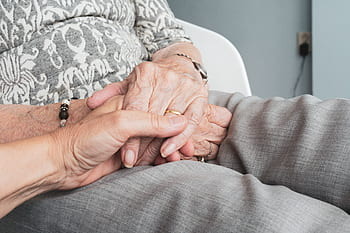
As the coronavirus curve begins to flatten across the country, state governments target the most vulnerable.
At the beginning of the COVID-19 crisis, the federal government told Americans to stay at home to “flatten the curve,” or decrease the amount of potential infections so as to prevent patients from overwhelming hospitals.
This was all to stop the United States from suffering the same fate as Italy, whose shortage of medical supplies and hospital beds caused many Italians to die without receiving care, and doctors were forced to prioritize the young over the old.
But even as the rate of U.S. hospitalizations and deaths have started to decline, the medical establishment and governing authorities have sinister plans to ration the treatment given to the elderly.
My home state of California last week published its own guidelines in the event hospitals are overrun. In a 38-page document by the California Public Department of Health, the state outlined that hospitals should prioritize younger patients over the old, “because they [the young] have had the least opportunity to live through life’s stages.” The directive stated that intensive care beds and ventilators should be preserved for those with the highest life expectancy and rate of survival.
For serious cases, hospitals will give patients a score to determine who should receive intensive care. Those with the lowest scores — usually patients deemed most likely to survive treatment and who do not have chronic illness — receive priority. Those with a lower life expectancy get higher scores.
As the Los Angeles Times reported, “Total scores would range from one to eight, with priority for ventilators given to those with lower scores. If there are not enough resources to treat all patients with the same score, the guidelines suggest hospitals group patients by age — ages 12-40, 41-60, 61-75 and older than 75 — and treat younger people first.”
With its new coronavirus guidelines, California is encouraging hospitals to prioritize the young over the old. Youth is now the golden ticket for treatment. The state calls this new configuration their “life-cycle principle.”
As the document states, “The ethical justification for incorporating the life-cycle principle is that it is a valuable goal to give individuals equal opportunity to pass through the stages of life — childhood, young adulthood, middle age, and old age…”
California is setting a dangerous precedent in ethics. Now a human being’s value is explicitly tied to age in this new social hierarchy, with the old paying the ultimate price.
These guidelines are sobering when considering older Americans are at a much higher risk of dying from COVID-19 than any other age demographic. According to the CDC, 8 out of 10 deaths reported have been in adults 65 years or older. Hospitalizations for those aged 65-84 is as high as 59%. And for those over 85, hospitalization is up to 70% with the death rate as high as 27%.
It is clear that the nation’s most vulnerable need protection and care, and California is telling hospitals to deny them treatment.
As well as targeting the elderly, new hospital guidelines could turn to a patient’s social utility in determining whether they should be given treatment. This is entirely contradictory to assurances by the CPDH that their “life-cycle principle” is not based on social utility.
Pulmonary and critical care physician Dr. Emily Rubin told NPR that “Some people think that people who are in a position to help address a crisis in the future if they were to recover, like health care workers and first responders, maybe should receive some sort of priority in triaging scarce resources.” The idea is that hospitals should favor those who could go on to save lives as a result of their treatment. In essence, a hospital interprets the social utility of its patients.
The idea of social utility as a determining factor for receiving treatment is also replicated in California’s coronavirus guidelines. In the case of a tie between patients’ priority scores, a healthcare worker will receive treatment over a non healthcare worker. In cases where a tie cannot be broken by a patient’s social utility, medical professionals turn to a random lottery.
In the mayhem surrounding the coronavirus pandemic, the government is now re-defining who deserves treatment. California’s “life-cycle principle” champions the young at the cost of the old and sick. Only those who are deemed useful to society are to be saved under these new guidelines.
This is an ethical disaster. All humans deserve equality of treatment and the right to live, regardless of disability or ability. California’s Public Health Department decided that the elderly and those with chronic diseases have less “social utility” and therefore less reason to live.
In the case hospitals are overrun, and doctors must make decisions on who to treat given limited resources, the medical establishment should reject the “life-cycle” and “social utility” principles in favor of a first-come-first-serve methodology, with an exception made for those most at risk of dying. Although this is not a perfect solution, and doctors will still have to make agonizing decisions, it is better than shuffling the old and diseased into a corner to die.
As every doctor who has sworn the Hippocratic Oath knows, every human life is important and should be protected, no matter how old or young. Rally against California’s state-sanctioned violence of the most vulnerable.
Victoria Marshall is a George Washington Fellow and a junior studying politics.

